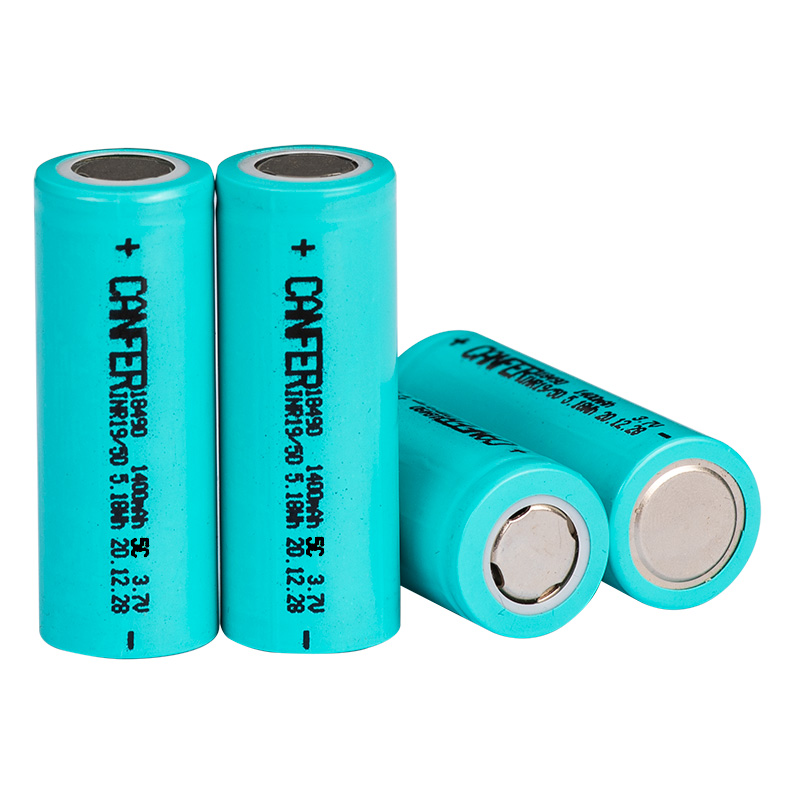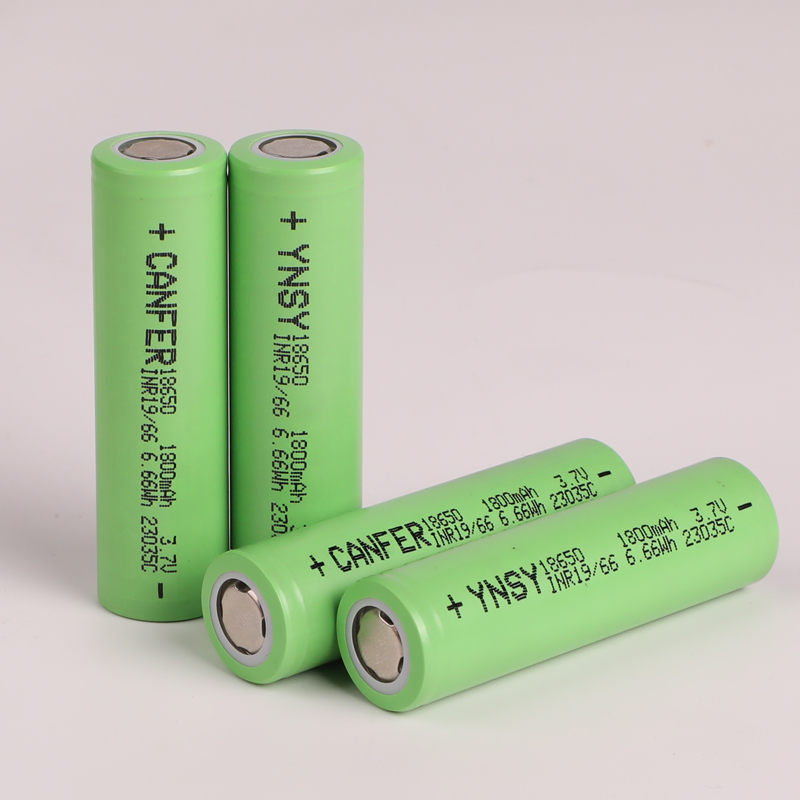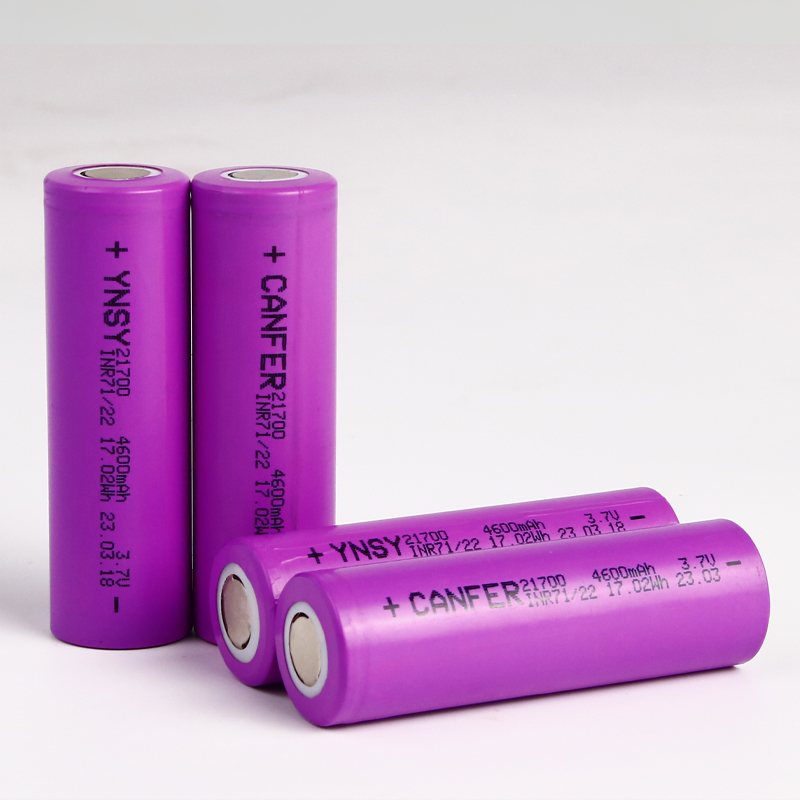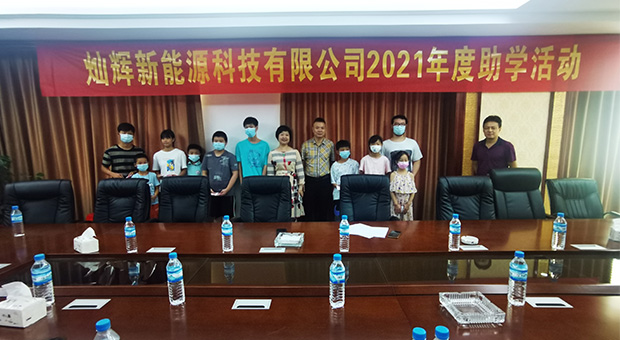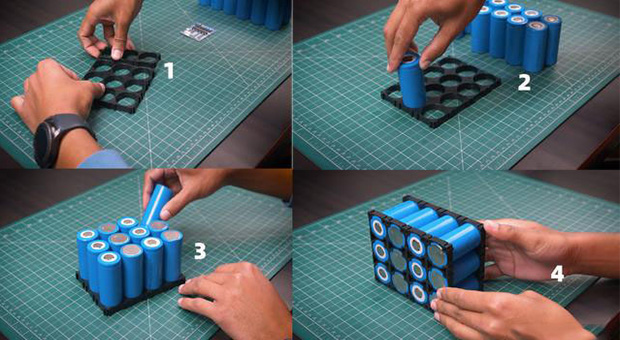Canhui New Energy Technology Co., Ltd | Clicks:749 | 2021-08-13
Storage methods and usage precautions for lithium battery packs
When using a lithium-ion power lithium battery, it should be noted that the battery will enter a dormant state after being placed for a period of time. When the capacity is lower than the normal value, the use time will be shortened accordingly. The lithium-ion power lithium battery is easy to activate, and the battery can be activated after 3-5 normal charge and discharge cycles to restore normal capacity. Due to its own characteristics, lithium-ion batteries have almost no memory effect. Therefore, users do not need special methods and equipment when activating a new lithium-ion battery. Not only in theory, but in practice, it is best to adopt a standard charging method from the beginning.
As for the "activation" of lithium-ion power batteries, there are many opinions: the charging time must be more than 12 hours, repeated three times to activate the battery. This statement that "the first three charges should be charged for more than 12 hours" is obviously a continuation of the nickel-hydrogen battery (such as nickel-cadmium, nickel-metal hydride). So this statement can be said to be a misrepresentation at the beginning. The charging and discharging characteristics of lithium-ion power lithium batteries and nickel-metal hydride batteries are very different. All serious formal technical data emphasize that overcharging and overdischarging will cause great harm to lithium-ion batteries, especially liquid lithium-ion batteries. Therefore, it is best to charge according to the standard time and method, especially not to charge for more than 12 hours. In addition, the lithium-ion powered lithium battery or charger will automatically stop charging when the battery is fully charged, so there will be no "trickle" charging that lasts for more than 10 hours. In other words, if your lithium-ion power lithium battery is fully charged, it will be charged in vain on the charger. No one can guarantee that the characteristics of the battery charge and discharge protection circuit will never change, and the quality will be foolproof, so the battery will be on the verge of danger for a long time. This is another reason against long charges.
On some machines, after charging for more than a certain amount of time, if the charger is not removed, the system will not only stop charging, but also start a discharge-charge cycle. Perhaps the manufacturers of this method have their purpose, but it is obviously not good for the life of the battery. At the same time, long-term charging takes a long time, often at night. According to the power grid conditions, the voltage at night is relatively high, and there are large fluctuations in many places. Someone said before that lithium-ion power lithium batteries are very delicate, and their ability to withstand charge and discharge fluctuations is much worse than that of nickel, which brings additional risks.
In addition, another aspect that cannot be ignored is that lithium-ion power lithium batteries are not suitable for over-discharge, and over-discharge is not good for the battery. This leads to the following questions. Because the number of charge and discharge is limited, lithium-ion batteries should be charged with as much electricity as possible. However, the experimental table data of lithium-ion battery charge and discharge cycle is as follows: cycle life (10% Ministry of Defense): more than 1000 times cycle life (100% Ministry of Defense): more than 200 times where DOD is the English abbreviation of discharge depth.
It can be seen from the above that the number of charges is related to the depth of discharge, and the cycle life of 10% DOD is much longer than that of 100% DOD. Of course, if it is equivalent to the relative total capacity of the actual charge: 10% * 1000 = 100, 100% * 200 = 200, the latter should be better for full charge and discharge. Under normal circumstances, after the remaining power of the battery is used up, you should charge it according to the principle of recharging, but if it is expected that it will not last a whole day the next day, you should start charging in time. Of course, if you're willing to take the charger with you to the office, that's a different story.
When charging in anticipation of an important upcoming event that will cause heavy communication, charge ahead of time even if the battery has a lot of power remaining, because there is no real loss of "1" charge cycle life, that is, "0.x" times, and Often x will be small.
The principle of recharging after the remaining battery is used up is not going to extremes. There is a popular saying, which is the same as charging for a long time, that is, "use up the battery of the machine as much as possible, and it is best to use automatic shutdown". In fact, this practice is only suitable for nickel batteries, the purpose is to prevent the memory effect. Unfortunately, it also spreads in lithium-ion power lithium batteries. Someone continues to use the machine without charging it after being warned that the machine's battery is low. As a result, the machine in this example was unresponsive after charging and starting, so it had to be sent to customer service for maintenance. In fact, this is because the battery voltage is too low due to over-discharge, so that it does not have normal charging and starting conditions.
Pay attention to fire prevention when using lithium-ion batteries
Many people may be familiar with the lithium-ion power lithium battery of the mobile phone. In fact, it is used in many home appliances. There is no doubt about the advantages of high efficiency and light weight. The emergence of lithium-ion power lithium batteries has made it widely used.
Lithium-ion batteries have the advantages of light weight, high efficiency, and low temperature resistance (-40). Postage stamp-sized lithium-ion batteries with a thickness of 0.3 millimeters can last more than five years and are widely used in many high-end household appliances and mobile phones.
The lithium-ion power lithium battery is different from the zinc chloride and potassium hydroxide water-soluble electrolytes of existing manganese batteries and alkaline dry batteries. It uses organic solvents, and the positive electrode of lithium-ion power lithium batteries uses materials such as manganese dioxide, lead fluoride, and sulfurous chloride (which can be made into lithium-sub-batteries). Compared with the zinc chloride used in the negative electrode of general batteries, the lithium metal foil used in the negative electrode has a strong ionization tendency and a large voltage difference between the positive and negative electrodes, which improves the working efficiency of the lithium-ion power lithium battery. So why do lithium-ion power lithium batteries heat up and burn? Many materials in the original lithium-ion power lithium battery will react violently when in contact with water, releasing a large amount of heat energy, resulting in heat generation and combustion. The manganese dioxide in the positive electrode of a lithium-ion battery can be heated with just a tiny drop of water. Sulfur chloride in lithium-ion batteries comes into contact with water to produce hydrochloric acid and sulfur dioxide, releasing heat energy at the same time. Several factors make lithium-ion batteries the "fire" of life. Therefore, people must pay attention to waterproof and moisture-proof when using lithium-ion batteries. After various hosts are shut down, the lithium-ion battery should be removed and placed in a dry, low-temperature place to prevent and prevent family fire accidents caused by improper use of lithium-ion batteries.

 +86-13318055659
+86-13318055659
